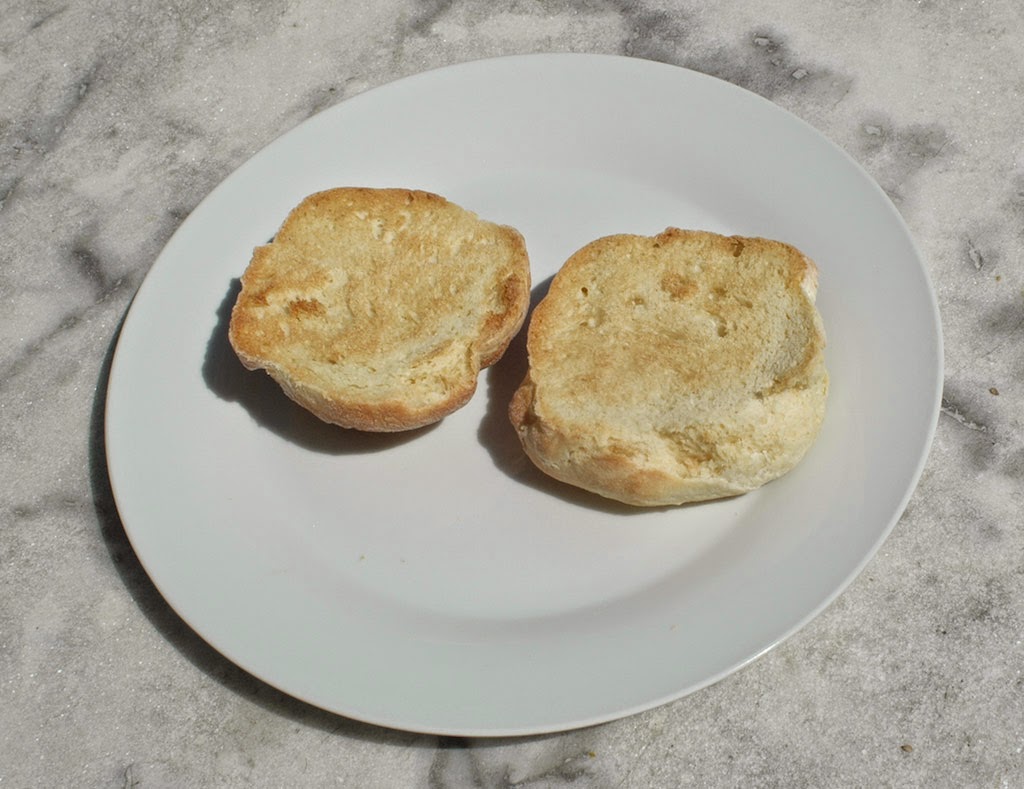Over the last few months, my son François Skyvington has been examining the question of high-quality hamburgers (as opposed to the dull stuff sold in fast-food outlets), with a view to creating a roadside restaurant in this field. He tells me that one of the basic challenges consists of being able to create your hamburgers using the very best bread buns that can be imagined. You might say that the bun is the foundation upon which the hamburger is to be built. And, if you start with a low-quality factory-made bun, the hamburger cannot possibly be top-class.
A few days ago, at the local supermarket, I came upon a beautifully-produced recipe book on the theme of high-quality hamburgers.
Not surprisingly, the opening pages dealt with the question of how to bake perfect buns. So, I decided to give it a try. I should explain that I’ve been baking loaves of wholemeal bread for ages, first in an old-fashioned manual manner, and later by means of a bread machine (as I’ve mentioned often in this blog). But the lightweight white buns used in hamburgers are a rather different affair, and I had no experience whatsoever in this domain.
The opening line of the recipe, for 10 to 12 buns, indicated 600 g of flour, but didn’t say which variety. I decided to use plain type-45 wheat flour of the kind used by pastry-cooks. Then the recipe called for 25 g of fresh yeast. I took this to mean about two-thirds of a block of compressed yeast of the following kind:
Now, that particular amount of yeast, 25 g, was the first of a series of minor elements that made me feel that there was something slightly contrived (but not necessarily erroneous) about this recipe. Everybody knows that these familiar blocks of yeast weigh 42 g, and it would have been more natural if the recipe had been composed of measurements based upon a kilogram of flour and a cube of yeast, giving rise to a dozen-and-a-half buns.
The recipe then indicated the following list of 6 ingredients:
— a teaspoon of salt
— a dessertspoon of sugar
— 180 g of skimmed milk
— 150 g of water
— 1 egg
— 30 g of butter
The idea of expressing liquid quantities in grammes, rather than volumetrically (in centilitres, for example), intrigued me. But what astonished me most of all was the explicit suggestion that all these ingredients should be simply “mixed together”. Can you imagine a naive cook trying to mix into the wet flour an egg, butter and fragments of yeast? The recipe had obviously jumped over certain important details… so I decided to use my common sense and modest cooking experience.
First, I made sure that the salt and sugar were interspersed throughout the flour. Then I took my familiar blender (used for pastry) and made sure that the butter was totally integrated into the flour.
Then I scrambled the egg into the milk and water, and did my best to “dissolve” the fresh yeast in this liquid. Only then did I pour everything into the flour and start to mix it all together. In fact, the measurements were ideal, in that the resulting mass of dough could be kneaded comfortably (and thoroughly) on a floured table. The recipe then told me to leave the dough in an oiled salad bowl, covered with a wet cloth, for an hour and a half. By the end of that period, the dough had risen nicely, but not excessively.
Since the dough was quite elastic, it was not a simple task to cut it up into regular-shaped buns, but I did my best. (I’ll need to invent some kind of a trick solution at this level.) The recipe suggested a funny method for covering the top of each future bun with sesame seeds. I was advised to wet a few paper towel sheets and roll them into a ball. Then I used this damp ball to moisten the upper surface of each bun before pressing it into a saucer of sesame seeds. Finally, the buns were baked at 200° (in an oven housing a cup of water, to moisten the atmosphere) for 20 minutes. And the outcome of my first attempt at bun-baking was most promising.
Esthetically, they are not as regularly round as orthodox buns. I didn’t realize that, once the dough has risen and then been cut into bun-sized fragments, the elasticity of each fragment of dough defies all attempts at reshaping the bun. (Here again, there’s obviously some kind of a secret technique that I haven’t yet grasped.) Viewed individually, each bun was—if I can say so with modesty—a tiny masterpiece.
The interior was light and airy, yet firm: a little like English scones.
After a few minutes under a grill, the interior surfaces were toasted perfectly.
I decided to add some ham, cheese and olives for a tasty toasted lunch.
I conclude that the principles of bun-making outlined in the above-mentioned book are correct and workable in a domestic kitchen, even though they would appear to be derived from an industrial process about which I know nothing. I now intend to pursue my research towards the ultimate home-made hamburger… including French fries made with a fabulous French-made minimum-oil device—the SEB Actifry—that I shall be receiving tomorrow. Unfortunately, I’m not at all sure that my investigations might help my son, because there is a huge gap between all the interesting cooking experiments that can be carried out at home and the cost-effective solutions that are required in a commercial restaurant environment.








ليست هناك تعليقات:
إرسال تعليق